The Camino de Santiago Part IV
We are now in León, staying at a wonderful family-run hotel on a beautiful square in the old part of the city. Directly across the square from our hotel is the Basilica de San Isidoro. Many churches along the Camino de Santiago offer to stamp your “Credential del Peregrino” (Pilgrim Credential), including this one. I mentioned the amazing museum adjoining the Basilica – this is a Must-See for anyone who visits León. Rick Steves mentions it in his book on Spain. The ceiling frescoes are truly unique and beautifully preserved for the most part:
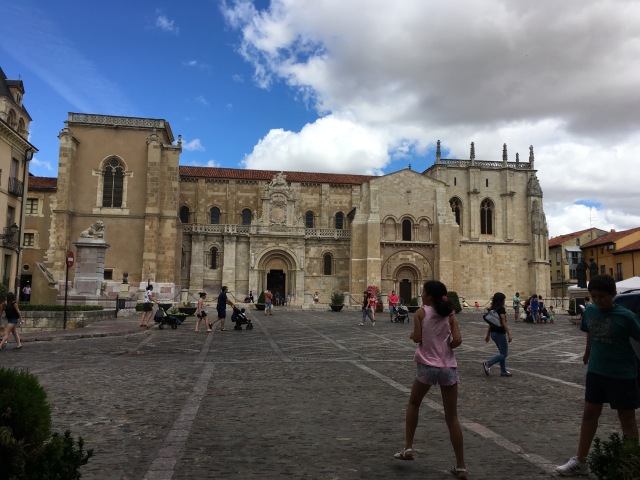
The Cathedral in León is definitely worth visiting, especially if you happen to be in town during their organ series, which features very interesting repertoire performed by many of Europe’s most well-known organists. Unfortunately, we arrived after the series had ended for the summer. But a big marquee in front of the Cathedral posts the entire series.
While it is true that the Cathedral is Burgos is so incredible that it dwarfs many others in this part of Spain, I agree with Rick Steves, who says that its stained glass windows are among the most beautiful anywhere. On the day we visited, it was dark and cloudy, so I didn’t get as many high-quality photos of the stained glass windows as I would have liked. But here are a few very lovely photos of the Cathedral:



Wood carving in the choir stalls – León Cathedral
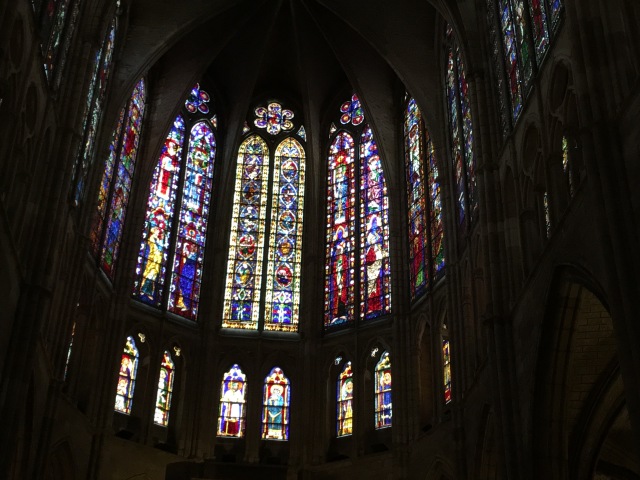
We had just dropped our rental car off in León and would be taking the train to Sarría, the starting point for the last 120 kilometers that pilgrims must walk entirely on foot in order to earn their Compostela. You may have seen me standing before the Cathedral in Santiago de Compostela at the end of our pilgrimage, holding my Compostela up to the camera. In case you didn’t, I will post it again when we arrive in Santiago.
The train trip from León to Sarría was very pleasant. The weather in Castilla y León was incredibly hot throughout our travels by car. And we had walked many miles in the cities and towns that we visited between July 15 and 21. We now find ourselves with a final night in León, then a day-long train trip to Sarría, where we check into our hotel and go to dinner at a fantastic restaurant named “Roma”:
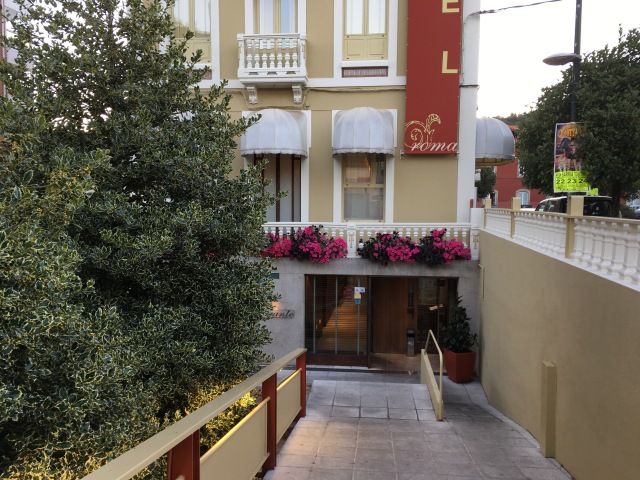
Despite its Italian name, the restaurant actually serves fantastic roasted meats and Jamón Serrano – a characteristically Spanish menu – along with great wine and sides. A typical dinner in various parts of northern Spain consists of a starter, such as roasted peppers, various tapas or a salad, followed by a cutlet, often roast pig or lamb, and French fries. (I must not neglect to mention that Spanish French fries are much closer to their French counterparts than they are to fries here in the US.) They also serve great bread with every meal, and I grew to love it, despite the fact that it was white or country bread. It actually reminds me of the fresh Italian bread that my immigrant family served at home when I was growing up.
This was one of the best meals we had on the entire Camino – and there were quite a few excellent ones! Roma in Sarría is highly recommended! And the prices for meals on the Camino are very affordable, even at somewhat upscale places such at this.
Day 1 of our Camino was filled with surprises. To begin with, my partner brought a backpack that was too heavy to carry. I had done a bit of research and managed to send most of my heavier items ahead to our hotel in Santiago de Compostela. My own backpack was around 17-18 pounds, which was very doable throughout the week-long pilgrimage on foot. The other thing that came to have meaning was that my flute was in my backpack. It could not be mailed back to the US from Germany, so it came along. More on the musical messages that accompanied us on the Camino in the next few installments.
The first surprise was the terrain – admittedly, I was beginning to get an idea of what the portion of the Camino in Galicia would be like from the train ride to Sarría. Truth be told, most English-language guides to the Camino do not tell pilgrims just how challenging the Walk can be. We certainly got a quick introduction to the challenges of hiking in mountainous terrain that first day, because the initial long stretch to the next town was almost entirely uphill in intense heat and humidity. The views were spectacular, but we were not entirely prepared for the demanding trek.
Here is a photo of our first stop at a lovely albergue in a small farming village. I have also posted a few photos of the countryside and farms that are typical of this part of Spain. The young couple across from us and pictured here were from Denmark and Sweden. We had a lovely conversation with them – they were stopped there for a day because his feet were seriously hurt from 6 weeks on the Camino and at least partly due to inadequate shoes. I was thanking my guide books for good information about foot care, and it would come in handy over the next week:
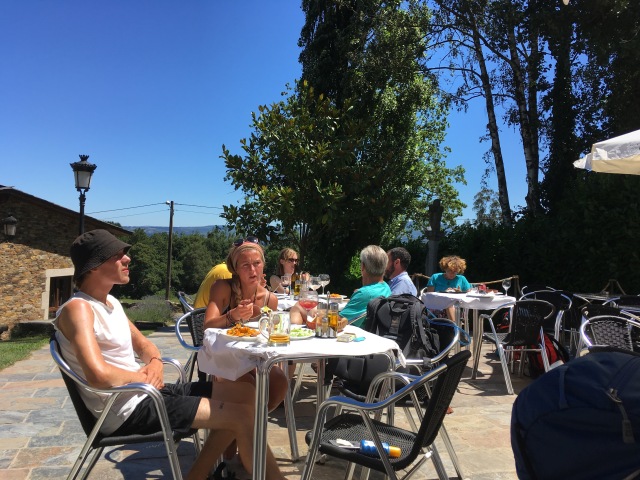
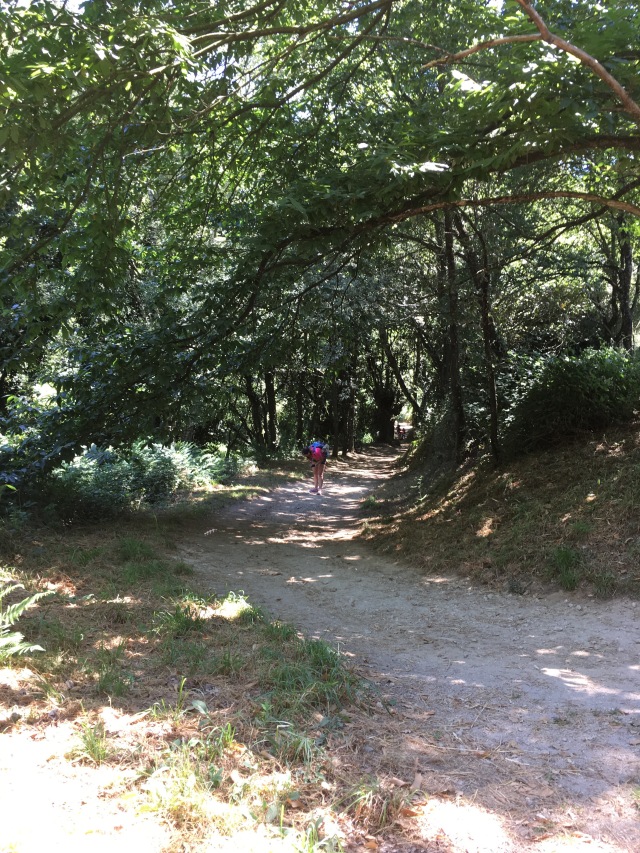

These markers ensure that pilgrims do not get lost in the countryside on the Camino.
Another important factor that guidebooks do discuss is hydration. Particularly in summertime, when the temperatures can be well into the 90s F, it is crucial to drink enough water. Everyone takes at least 1 water bottle along, attached to his/her backpack. But this is not enough, so there are many little inns along the way where one can stop for a rest and to drink one’s fill. If you are considering a pilgrimage on the Camino, please be sure to take this warning very seriously. On Day 1 I actually felt awful after the first part of the walk to the albergue pictured above. As soon as I drank a large bottle of water, it became clear that the reason was dehydration!
The next pointer for pilgrims along the Camino in Galicia is that an entire taxi industry has grown up in towns and cities along the route. This is because many people do not prepare sufficiently for their walk – either their backpack is too heavy, they have the wrong shoes for such a demanding series of paths, they overestimate the number of kms/miles they can cover in a single day, and/or they don’t train for the Camino.
The fact that we live at 7,200 ft above sea level is actually helpful if one trains here by hiking the many wonderful trails available in Santa Fe and around New Mexico. And I was never so grateful for my yoga practice, which allowed me to walk strenuous paths without having any major injuries, such as muscle cramps, ankle pain, etc. Although I did feel a bit of soreness from the long, uphill climbs, it was all within the realm of normal.
We, in fact, succumbed to the overestimation of our ability to cover distances in a single day. Whereas we had planned on walking between 20 and 30 kms per day on average, we were actually only able to do about half to three-quarters of that distance. That first day we took a taxi to our hotel in Portmarín, checked in and enjoyed a wonderful dinner in the open air on the square across from our hotel. The topic that evening was to recalculate what we could actually manage in the coming days.
Portomarín was a significant stop along the Way because something happened there that made a deep impression on us. As we were headed to dinner, a funeral was taking place in the church immediately in front of the restaurant. The man who had died must have been someone known to the community, because the square was filled with mourners. When one is on a pilgrimage, taking time out from this incredibly fast-paced life, one is struck by the realization that the ultimate destination is acceptance of the end of life. This could not have been more clear to us that evening.
Portomarín is on a beautiful river. Here are several photos of the town and surrounding area. The first two photos are of the countryside en route to Portomarín from Sarría:

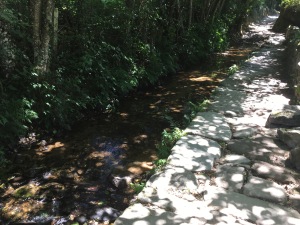

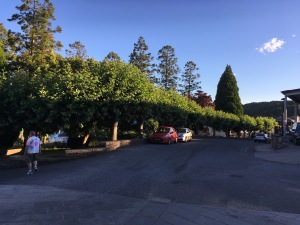
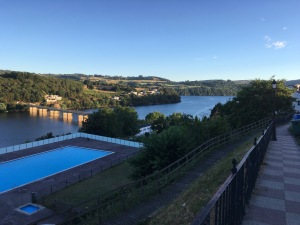
We were up reasonably early the next morning for Day 2 of our walk on the Camino. More on that in the next installment.
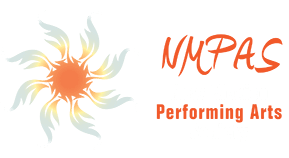
Leave a Reply
Want to join the discussion?Feel free to contribute!